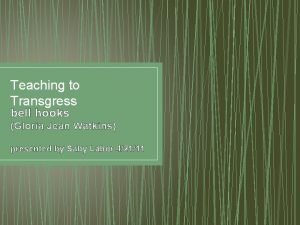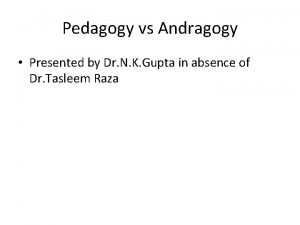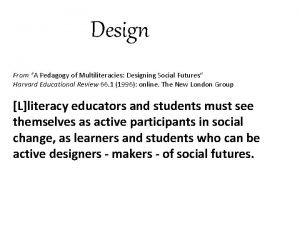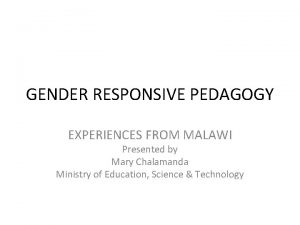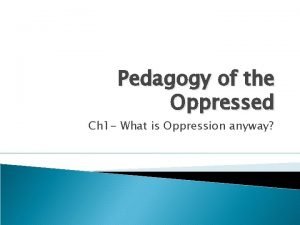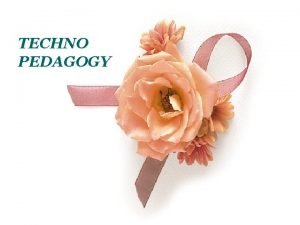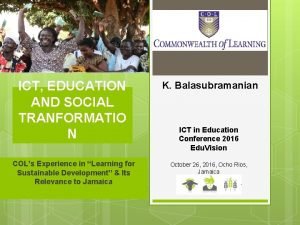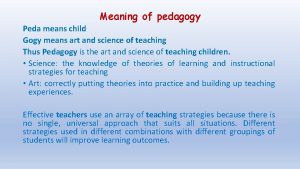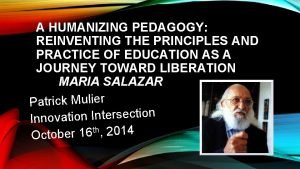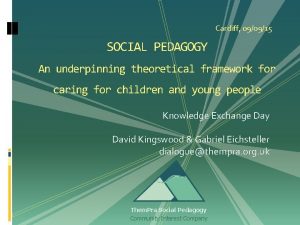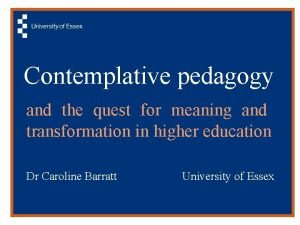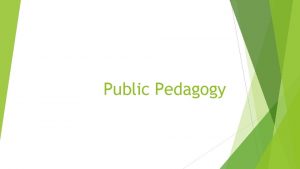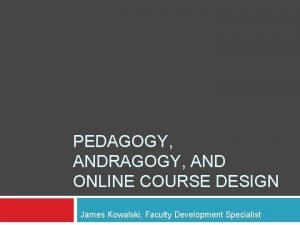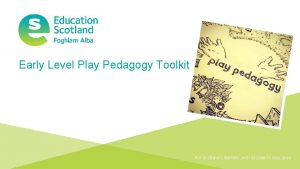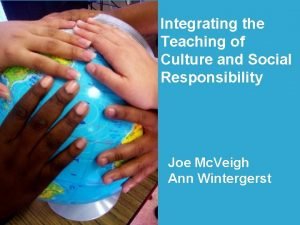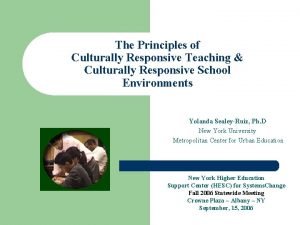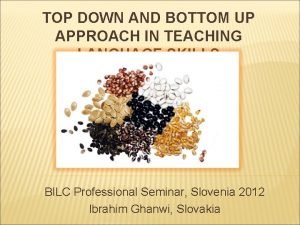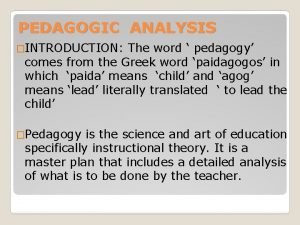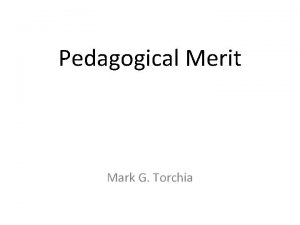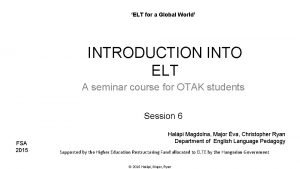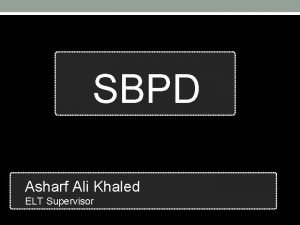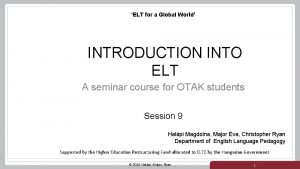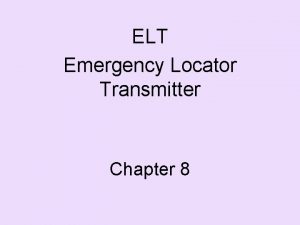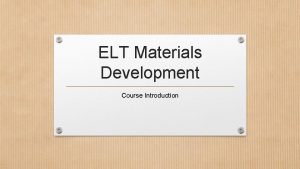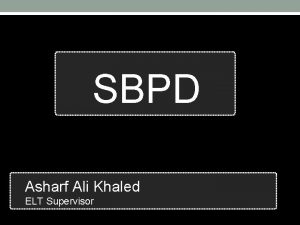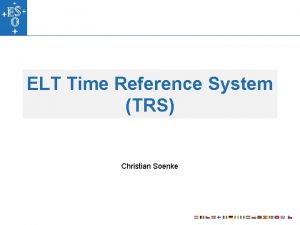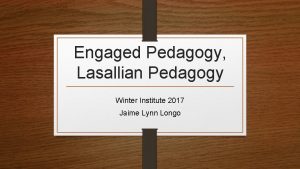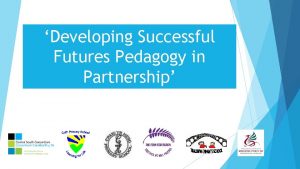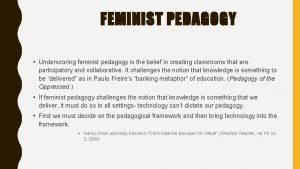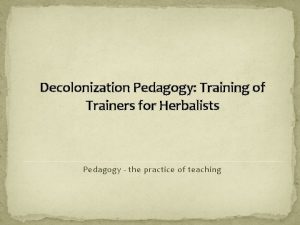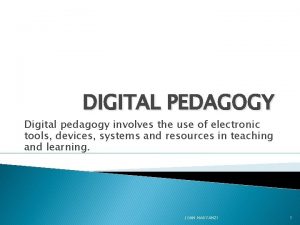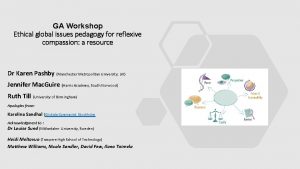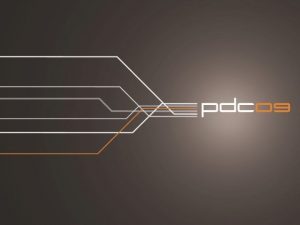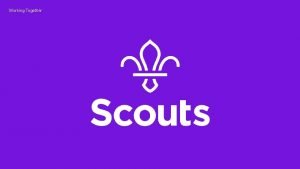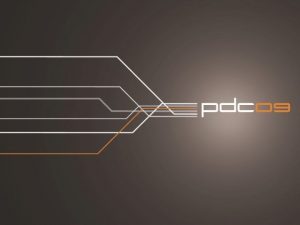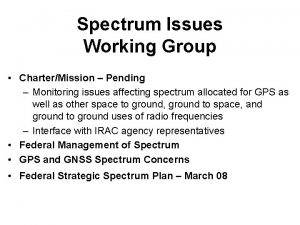Issues in ELT Pedagogy Working with the 21




























- Slides: 28

Issues in ELT Pedagogy: Working with the 21 st Century Student Anna Saroli Acadia University anna. saroli@acadiau. ca

Structure of the workshop I. Overview of teaching approaches in the 21 st century (30 minutes) II. Breakout into groups: (1 hour) - Learning styles - Finding learning opportunities III. Feedback and resources (30 minutes)

Goals of the workshop General: To explore ways of accommodating different learning styles in the language classroom Specific: To share ideas about how to support students with different learning styles by incorporating learning strategies in the classroom

Changes in teaching approaches in the 21 st century � Learner � Focus autonomy on new language competencies: - sociocultural competence - formulaic competence - interactional competence: - actional competence - conversational competence - non-verbal/paralinguistic competence

Recognition of Multiple Intelligences (MI) �Verbal-linguistic: “word smart”

Recognition of Multiple Intelligences (MI) �Logical- mathematical: “math smart”

Recognition of Multiple Intelligences (MI) �Visual-spatial: “picture smart”

Recognition of Multiple Intelligences (MI) �Musical-rhythmic: “music smart”

Recognition of Multiple Intelligences (MI) �Bodily-kinesthetic: “body smart”

Recognition of Multiple Intelligences (MI) �Naturalist: “nature smart”

Recognition of Multiple Intelligences (MI) �Intrapersonal: “self smart”

Recognition of Multiple Intelligences (MI) �Interpersonal: “people smart”

New ideas about language pedagogy � � Postmethod condition: awareness of the futility of trying to find the best method Postmethod pedagogy: seeks to transcend the limitations of method (Kumaravadivelu, B. 2003. Beyond methods: macrostrategies for language learning. New Haven: Yale University Press)

Interaction between theory and practice �Learner �Other - autonomy concepts in language pedagogy: metacognition: “thinking about thinking” self-regulation: “learning to learn” motivation: - intrinsic - extrinsic individual differences

Integrating 21 st Century Skills in Language Teaching �Relevance �Develop thinking skills �Encourage �Exploit learning transfer technology �Encourage creativity (Saavedra and Opfer, 2012)

�Teach students how to learn: ◦ Focus on metacognition ◦ Promote learner autonomy: �Identify and manage learning opportunities

Learning Styles/ Opportunities/ Strategies �Learning styles: ◦ an individual's unique approach to learning based on strengths, weaknesses, and preferences. �Learning opportunities: ◦ access to any activity that is likely to lead to an increase in language knowledge or skill.

�Learning strategies: ◦ procedures that facilitate a learning task �metacognitive strategies �socio-affective strategies

Learning styles: 1. Felder and Soloman’s Index of Learning Styles Questionnaire �Active/reflective information scale: processing https: //www. webtools. ncsu. edu/learningstyles/

Learning styles: Index of Learning Styles Questionnaire �Sensing/intuitive information scale: taking in https: //www. webtools. ncsu. edu/learningstyles/

Learning styles: Index of Learning Styles Questionnaire �Visual/ verbal scale: how information is presented https: //www. webtools. ncsu. edu/learningstyles/

Learning styles: Index of Learning Styles Questionnaire �Sequential/ global scale: how information is organized https: //www. webtools. ncsu. edu/learningstyles/

Visual learners: learn through seeing �Watching �Maps, demonstrations diagrams �Written instructions

Auditory learners: learn from the spoken word �Listening to lectures �Repetition, �Verbal dictation explanation

Kinesthetic learners: learn by exploring the world around them �Hands-on �Crafts, �TPR demonstrations realia

Final points �Students can learn to “stretch” their learning style. �Teachers should focus on the content’s best modality, not the student’s. �However, a variety of learning strategies will make a lesson more interesting and challenging!

Groupwork � 1. Introduce yourselves (2 min. ) � 2. Take learning styles quiz and share results (10 -15 min. ) � 3. Choose teaching topic and age group (5 min. ) � 4. Design 2 – 3 learning activities (20 -25 min. ) � 5. Make notes to pass in (10 min. ) � 6. Choose spokesperson (2 min. )

Learning from our students
 Contoh hot working
Contoh hot working Principle of hot working process
Principle of hot working process Hot working and cold working difference
Hot working and cold working difference Machining operations
Machining operations Working smart vs working hard
Working smart vs working hard Bell hooks transgression
Bell hooks transgression Gradual release of responsibility pedagogy
Gradual release of responsibility pedagogy Multiple intelligences test
Multiple intelligences test Humanizing pedagogy meaning
Humanizing pedagogy meaning Andragogy vs pedagogy
Andragogy vs pedagogy A pedagogy of multiliteracies designing social futures
A pedagogy of multiliteracies designing social futures What is gender responsive pedagogy
What is gender responsive pedagogy River
River Techno pedagogy
Techno pedagogy Conclusion of ict in education
Conclusion of ict in education Pedagoghy
Pedagoghy Webinar organisational change
Webinar organisational change Epistemology and pedagogy
Epistemology and pedagogy Humanizing pedagogy
Humanizing pedagogy Social pedagogy
Social pedagogy Contemplative pedagogy
Contemplative pedagogy Public pedagogy definition
Public pedagogy definition Pedagogy meaning
Pedagogy meaning Education scotland play pedagogy toolkit
Education scotland play pedagogy toolkit Example of equity pedagogy
Example of equity pedagogy Culturally relevant pedagogy
Culturally relevant pedagogy Top down processing reading
Top down processing reading Pedagogy slideshare
Pedagogy slideshare Pronounce pedagogical
Pronounce pedagogical





